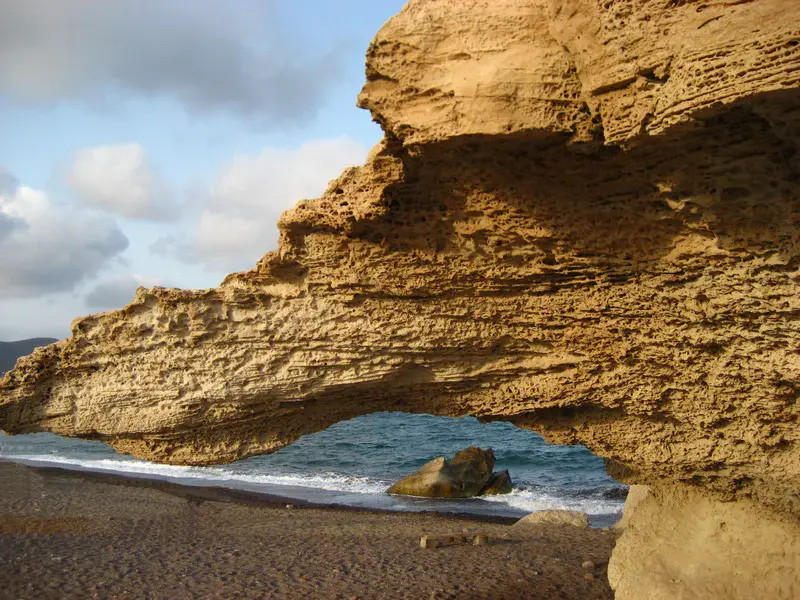
Escullos
by Alicia Morugán, Miguel Hernández University, Elche, Spain
At Cabo de Gata (Spain)
Featured on GeoLog, the official blog of the European Geosciences Union
Categories
- Geodynamics (372)
- Geomorphology (1407)
- Soil System Sciences (963)
- Stratigraphy, Sedimentology and Palaeontology (531)
Location
Colours
Image properties
2272 × 1704 px;
image/jpeg; 864.3 KB
Camera:
Canon Digital IXUS 60
Taken on 22
August
2008
Submitted on 5 February 2014
Licence
Creative Commons Attribution 3.0 Unported (CC BY 3.0)
Credit
Alicia Morugán (distributed via imaggeo.egu.eu)
Share
Appreciate
Report
Alicia Morugán 10 years, 9 months ago
This picture shows a Quaternary aeolianite fossil dune at the Escullos beach, in the Nature Reserve of Cabo de Gata (Almeria, Spain). It is a richly fossilifeorous which contains abundant cidaroid spines (http://goo.gl/Qy1w6B) Almeria is the eastern most province of Andalucia and it located in South East Spain. Almeria province is a very interesting area in which one can easily see through its landscape the relationships between tectonics, sedimentary geology and geomorphology. The province lies within the Betic Cordillera, an Alpine mountain chain resulting from the collision of the micro-Iberian and African plate from Late Mesozoic to Middle Cenozoic times. This characteristic makes it very tectonically active. Furthermore, Almeria province have the driest climate in Europe, resulting in mean annual precipitation <300 mm. In terms of geomorphology, quaternary alluvial fans are the most common structure in the region. Geologically speaking, eolianite or aeolianite rocks are the most common rock. However, in common use, the term refers specifically to the most common form of eolianite: coastal limestone consisting of carbonate sediment of shallow marine biogenic origin, formed into coastal dunes by the wind, and subsequently lithified.